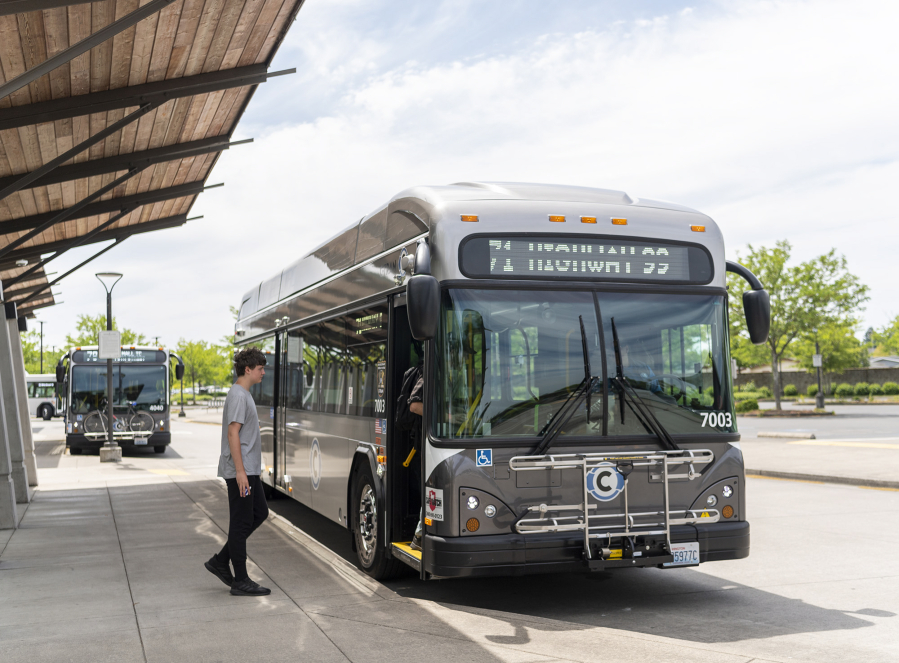At a recent C-Tran board meeting, a bus sat within view, no more than 15 yards away and separated by just a wall of windows, from the board of directors. It looked like the typical bus; 40 feet long, gray and black, but when it turned on and drove around the parking lot, hardly anyone noticed.
It wasn’t because the three dozen people in the room had gone deaf to the clanks and rumblings of a moving bus. It was one of the agency’s first battery electric buses, and it was inaudible from the room.
As of Monday, C-Tran’s battery electric buses are on the streets of Clark County servicing local, regional and express routes. They are the first of many zero-emission buses, as the existing diesel buses are phased out and the agency aims for a zero-emission fleet by 2040.
Talks of C-Tran acquiring battery electric buses have percolated for nearly a decade. However, it wasn’t until 2021 that the board of directors authorized their purchase.
The buses
The battery electric buses look and feel like the rest of C-Tran’s fleet. They can be easy to miss if you aren’t actively looking for a tailpipe or monitoring the vibrations as it drives. They were made by Gillig, the same manufacturer of the majority of C-Tran’s other buses.
It was also essential for C-Tran that their range, currently averaging 200 miles per charge, did not impact service.
“Wherever these vehicles are assigned in our system, we know that we’ll be able to meet the same standard of service that our riders expect,” said Eric Florip, C-Tran’s manager of communications and marketing.
Although the exact route the battery electric buses service can change depending on the day, they will mostly run in high-pollution, noisy areas, said Leann Caver, C-Tran’s chief operations officer.
Going forward
The next large bus purchase C-Tran is eyeing is hydrogen fuel cell buses to replace the 2008 fleet by 2025 at the earliest. Hydrogen fuel cell buses have batteries that are charged via an onboard fuel cell that generates electricity by consuming hydrogen gas as the bus travels.
Once the hydrogen fuel cell buses are in place, C-Tran will “compare those two technologies and ultimately decide which path makes the most sense for both C-Tran and the community we serve,” Florip said.





